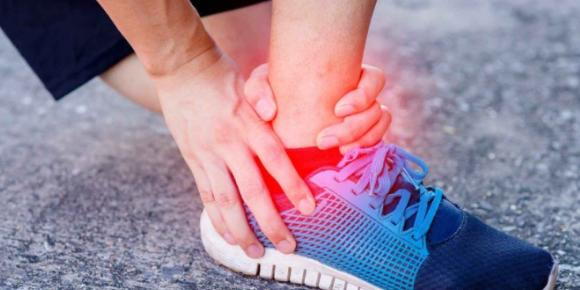
- posted: Aug. 19, 2020
Your Issue Might Be Your Ankle!
Have you ever been working out or maybe doing some chores or work around the house and notice how stiff you are if you go from a squat position to a standing position. You may attribute this stiffness to you “getting old,” or some other nonsense excuse but what it might be coming from is the lack of mobility in your ankles.
Your lower body works as a full kinematic chain, meaning if there is tightness in the ankles it could cause issues in the knees and then move up into the hips and finally moving into the low back. You might be going from physical therapist to physical therapist or Doctor of Chiropractic to Doctor of Chiropractic to try and fix your low back pain, but none of the above have ever really figured out that maybe the back pain may be stemming from lower down in the body…maybe from some stiffness and lack of mobility in the ankles!
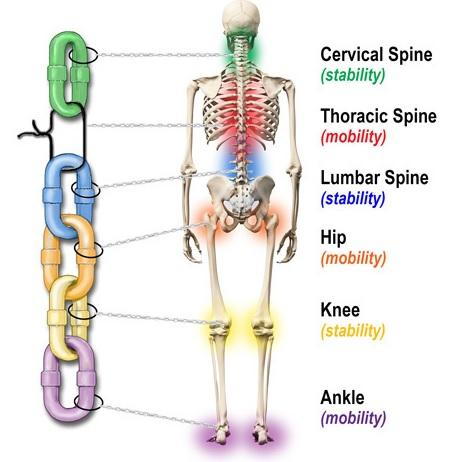 Figure 1 As you can see from the image above your entire body works together as a chain. When looking at the ankles a decrease in mobility could ultimately lead to knee pain/instability, hip pain, and even up into back pain. Let’s Take a Look at the Ankles
Figure 1 As you can see from the image above your entire body works together as a chain. When looking at the ankles a decrease in mobility could ultimately lead to knee pain/instability, hip pain, and even up into back pain. Let’s Take a Look at the Ankles
There are a few different areas of the ankles that could have something going on with them that will cause a decrease in mobility. First off, you could have an anterior ankle impingement syndrome. This is caused by a restriction in the gliding motion of the tibia on the talus of the foot. This restriction will cause a “pinching sensation” in the front part of the ankle when performing a deep squat or when dorsiflexion of the foot occurs…dorsiflexion is when you flex the top of the foot towards your shin. Dorsiflexion of the foot is mainly controlled by the tibialis anterior muscle and there may be an issue occurring there especially if you’re a runner, but we will get into all of that a little later.
Next, there may be some tightness, a sprain/strain, or a tendinopathy on the back part of the ankle mainly with the Achilles tendon. Any of these conditions will cause a decrease in mobility of the ankle and make it hard for you to perform certain moves like a squat. Before we move on though, I know some of you will be reading this thinking, “I’m older, there is no need for me to squat, I am just old.” That is a horrible way of thinking, you could be 80 years old and still performing squats even with weight without any pain or restriction at all. If you can’t then you need to schedule an appointment today and get you evaluated. Do not let “old age” be an excuse for lack of mobility and function in your everyday life.
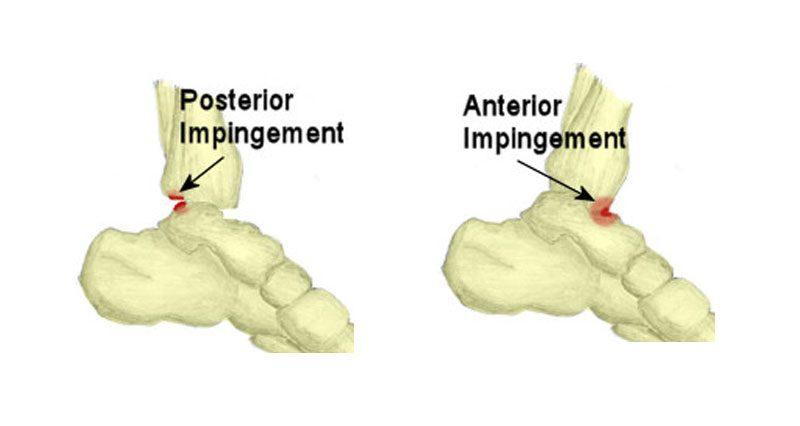 Figure 2 There are many different conditions or situations that are causing the ankles to decrease in their natural ability. The image above shows that there could possibly be an anterior or posterior impingement restricting motion to the ankle. You could also have tightness, tendinopathy, or a strain in the Achilles or calf muscle on the back of the leg that is causing a decrease in mobility.
Figure 2 There are many different conditions or situations that are causing the ankles to decrease in their natural ability. The image above shows that there could possibly be an anterior or posterior impingement restricting motion to the ankle. You could also have tightness, tendinopathy, or a strain in the Achilles or calf muscle on the back of the leg that is causing a decrease in mobility.
How Do I Test My Ankles?
There are a few different simple tests that you can quickly do at home that will be able to measure if you have a decrease in ankle mobility and where exactly the issue is occurring at. This test is known as the wall test and it is so quick and easy you can stop reading for a second, go to the nearest walk and check out your ankle mobility. What you will do first is place your toes about 5 inches, or the width of your fist, away from the wall. Then you will slowly bring your ankle into dorsiflexion bringing your knee to the wall. If you are unable to bring the knee to the wall without lifting your heel or having your knee collapse inward or outward (See Figure 3), then you know that you have a decrease in ankle mobility. This is a good thing! Now we can figure out what to fix and this could be the answer to your chronic knee, hip, and low back pain!
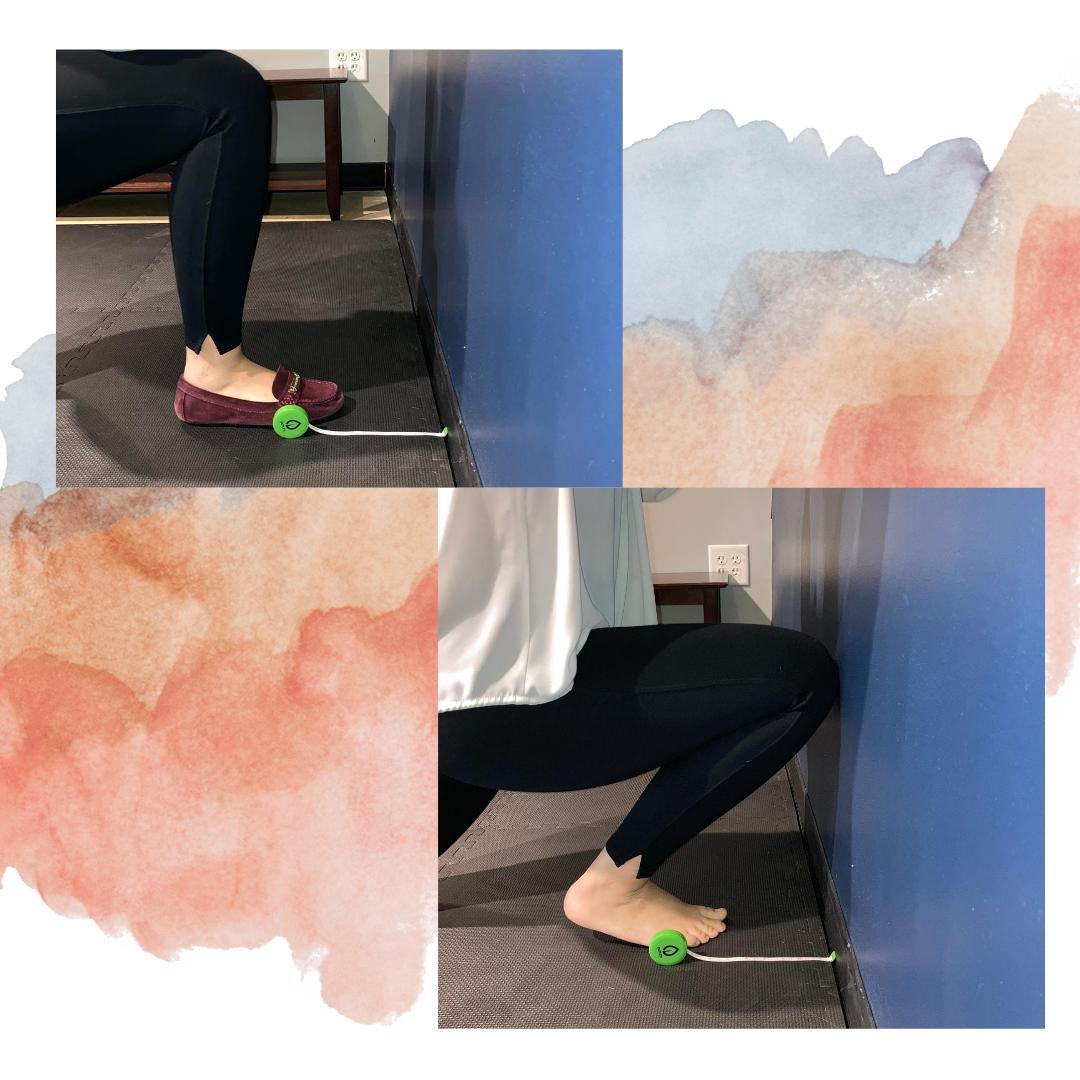 Figure 3 The Wall Test: The image above is showing the wall test to test ankle mobility. As you can see in the lower image, the knee is touching the wall but the heel is not able to remain on the floor. This is indicative of having a reduction of ankle mobility due to tightness or strain on the posterior part of the leg.
Figure 3 The Wall Test: The image above is showing the wall test to test ankle mobility. As you can see in the lower image, the knee is touching the wall but the heel is not able to remain on the floor. This is indicative of having a reduction of ankle mobility due to tightness or strain on the posterior part of the leg.
Now we want to know what is causing this decrease in mobility. If while performing the test you notice that there is a “pinching” or pain in the front part of the ankle then we know that the mobility is being restricted due to a restriction of the tibia gliding on the talus, we will call these people Group A. Regular Chiropractic adjustments to the foot and ankle and a few exercises will get rid of the restriction and bring proper motion back into the joint. If while performing the test you notice there is tightness in the back of the ankle then we know that the decrease in mobility is being caused by a soft tissue issue most likely involving the Achilles tendon or some muscles in the posterior region of the lower leg, we will call these people Group B. Now that we know what is causing the issue, lets give you some things you could do right now that can help restore function in the ankle!
Let’s Restore Function!
If you fall into the category of Group A we can start by pulling out any kind of exercise band you have and attaching it on one side to a pole, or door, or table leg. Place the other part of the band on the front side of the ankle right on the talus. F.Y.I. try to not place the band on your shin or all you will be doing is pulling the tibia and causing more dysfunction. Once you’re set it is time to start driving the knee forward similar to what you were doing with the wall test. Once the knee is as far as you can move it without lifting the heel from the floor, hold for 5 seconds, and slowly return to the starting position. Repeat for 20 reps, and while you’re at it do the other ankle as well and keep everything nice and non-restricted.
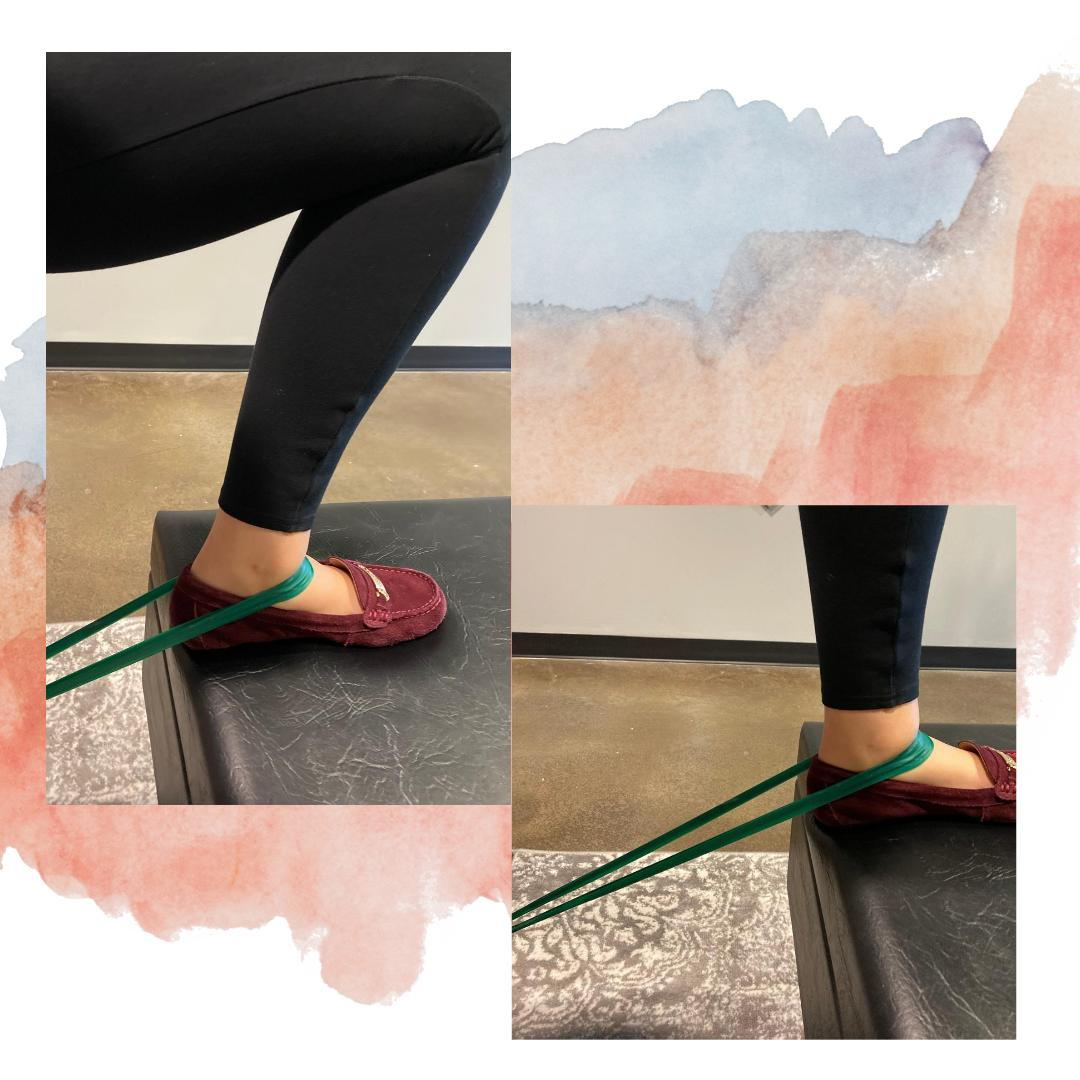 Figure 4
Figure 4
Like stated above applying a band to the talus, and not the tibia or shin bone, and performing a similar movement to the wall test will allow for a decrease in the impingement and allow for better gliding of the tibia on the talus. Many videos or tutorials will tell you to attach the band to anything but it is important to have a downward pull of the band on the talus to get the correct effect.
If you fall into the category of Group B then you need to find a step or something sturdy to stand on that you can allow your heels to hang off. Perform what is called a drop ankle stretch where you slowly lower your heels and get a big stretch in the posterior part of the leg, the calf, and the Achilles tendon. Perform this stretch 5-10 times while holding the stretch for 10-20 seconds each rep (See figure 5). If you are still suffering from that tightness it is time to grab your foam roller and stretch out that calf and tendon even more. For some different ways to perform this go and watch our YouTube video on ankle mobility.
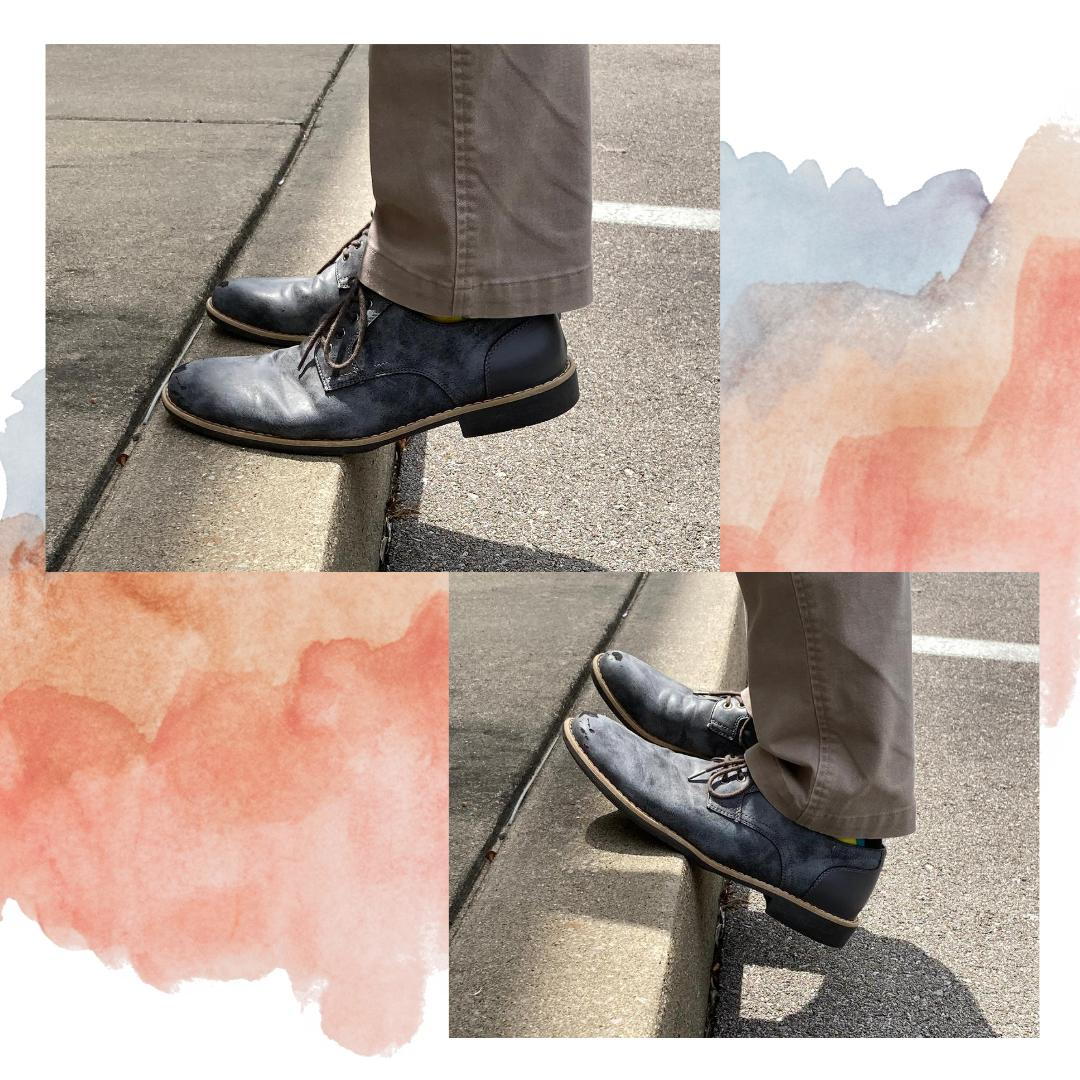 Figure 5 This is showing how to easily get a nice, deep stretch into the posterior soft tissue of the legs. Resting at the bottom of the stretch longer will get the best effect. The image shows using an outside step but you can easily use something indoor as long as it is tall enough to allow a deep stretch of the posterior leg.
Figure 5 This is showing how to easily get a nice, deep stretch into the posterior soft tissue of the legs. Resting at the bottom of the stretch longer will get the best effect. The image shows using an outside step but you can easily use something indoor as long as it is tall enough to allow a deep stretch of the posterior leg.
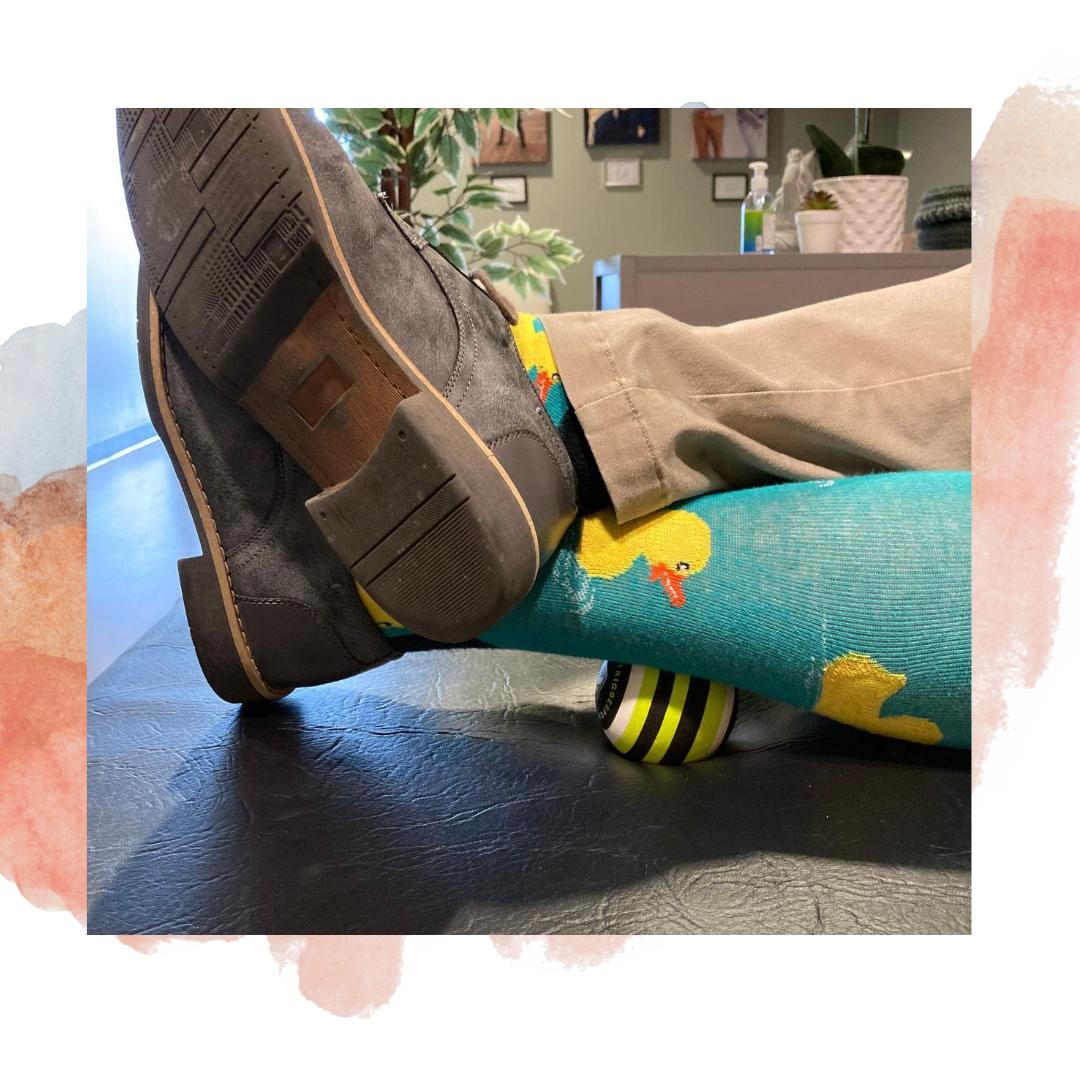 Figure 6 The above image is showing how to use a trigger point or lacrosse ball to help roll out the soft tissue on the posterior aspect of the leg. Another tool that can be used and may be easier to handle would be a medium sized foam roller. Rolling out the tissue will help relax the muscles and tendons and allow more mobility into the adjacent ankle. **Tip** by placing your other leg on top of the injured leg will allow an even deeper massage into the muscle.
Figure 6 The above image is showing how to use a trigger point or lacrosse ball to help roll out the soft tissue on the posterior aspect of the leg. Another tool that can be used and may be easier to handle would be a medium sized foam roller. Rolling out the tissue will help relax the muscles and tendons and allow more mobility into the adjacent ankle. **Tip** by placing your other leg on top of the injured leg will allow an even deeper massage into the muscle.
Quick Hack for Runners
If you are a runner, you might have some slight decrease in mobility in your ankles but usually runners are pretty good at keeping proper motion in their lower extremities. But you may be suffering from tightness or “knots” located on the front part of the lower leg which may be hindering your running ability. Run your fingers to the mid part of your shin, slightly bring them laterally onto the meaty part of the muscle in your leg, this is your tibialis anterior. Remember this location and place a lacrosse ball or another sturdy ball onto that location and slowly lay your leg onto the ball. Work the ball between your leg and the ground and slowly work into the muscle. This will release the “knots” and tightness in the leg and almost immediately afterward you will notice a decrease in the pain or tightness while running. Perform this whenever you feel that the tightness or ankle mobility may be hindering your running experience.
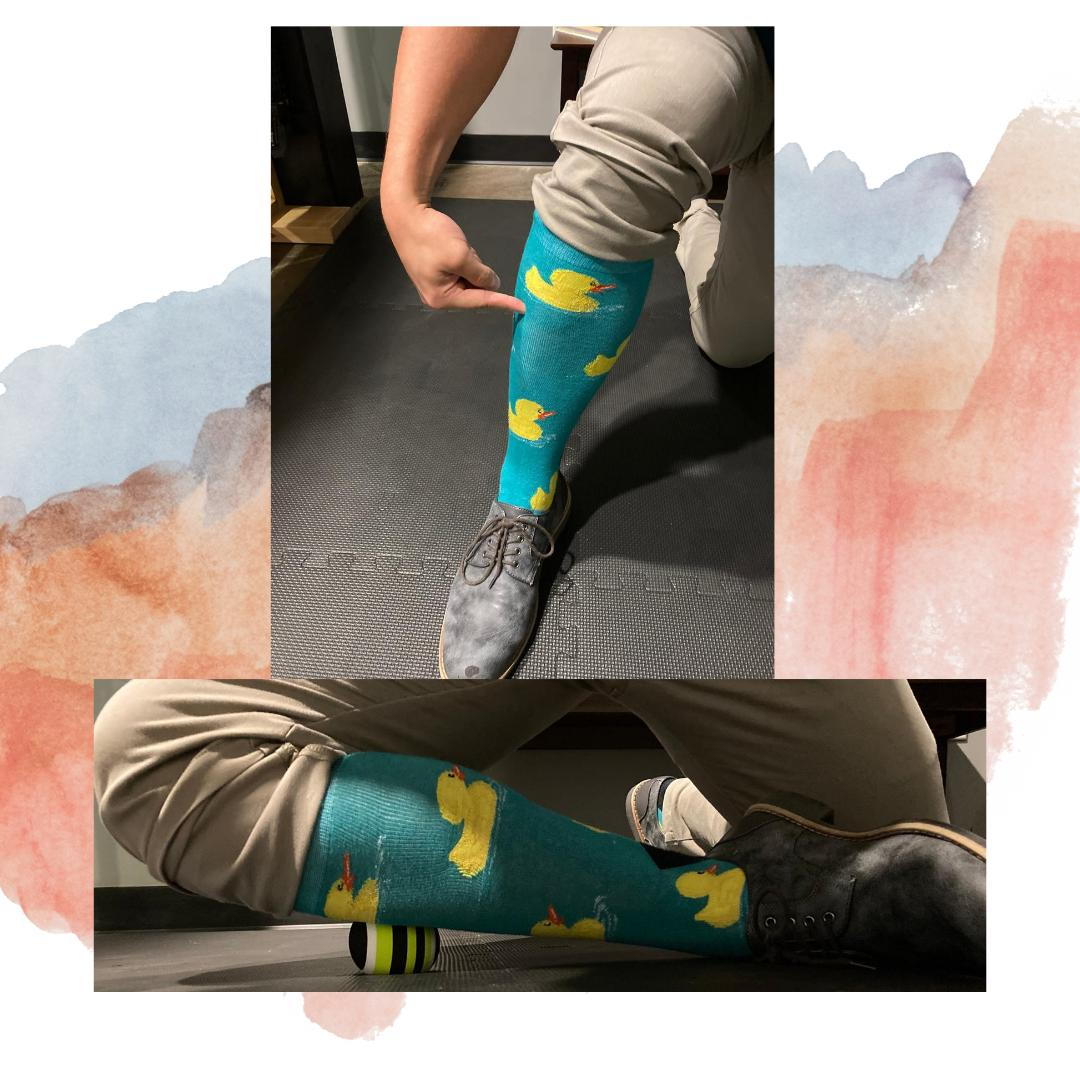 Figure 7 By Placing a lacrosse ball or trigger point ball onto the anterior tibialis, or the meaty part of the shin just lateral to the tibia bone, runners can help relax tight hard to massage muscles which will decrease their possibility of being afflicted from different running induced conditions including shin splints.
Figure 7 By Placing a lacrosse ball or trigger point ball onto the anterior tibialis, or the meaty part of the shin just lateral to the tibia bone, runners can help relax tight hard to massage muscles which will decrease their possibility of being afflicted from different running induced conditions including shin splints.
Conclusion
There you have it…now you know that a decrease in mobility in one part of the body can cause an assortment of issues in other areas of the body. Decreased ankle mobility could down the line cause low back pain. Now you know what you have to do! Getting to stretching, get to exercising and get that motion back in your life. Movement is the best medicine and that is why we are here to reduce those restrictions to your body’s movement and restore your body’s optimal function. We would love to have you in the office and analyze everything from your head down to your toes and see what we can do to optimize your performance. Schedule an appointment today with the links below and remember to “keep your mind and body inTune.”
- Call us at: 615.553.2268
- Schedule an appointment at: www.inTuneChiroTN.com
- Check out more blogs at: More inTune Chiro Blogs
- Give us a like and subscribe to our YouTube Channel: inTune Chiropractic's YouTube Channel
Don’t let your pain or dysfunction get in the way of your life, let us help you! The amount of different tools and experience we have at our disposal makes inTune Chiropractic Clinic, Inc. in Mount Juliet, Tennessee the experts in the field of ridding your body of pain, restriction, and dysfunction and letting you live your best life! Reach out to us today!


